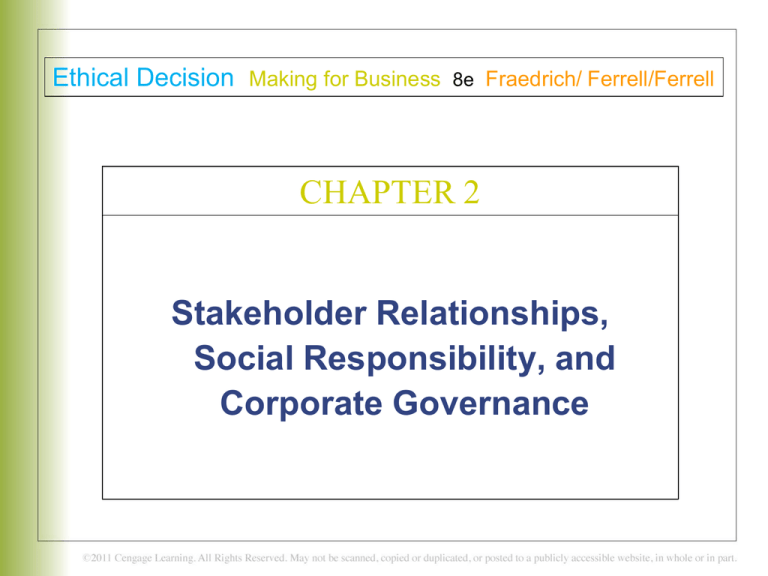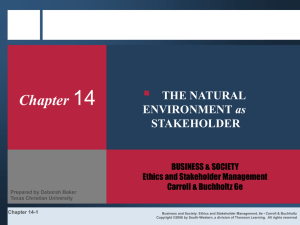What Is a Stakeholder?
advertisement

Ethical Decision Making for Business 8e Fraedrich/ Ferrell/Ferrell C HAPTER 2 CHAPTER 2 Stakeholder Relationships, Social Responsibility, and Corporate Governance Chapter Objectives • To identify stakeholders’ roles in business ethics • To define social responsibility • To examine the relationship between stakeholder orientation and social responsibility • To delineate a stakeholder orientation in creating corporate social responsibility • To explore the role of corporate governance in structuring ethics and social responsibility in business • To list the steps involved in implementing a stakeholder perspective in social responsibility and business ethics Chapter Outline • Stakeholders Define Ethical Issues in Business • Social Responsibility and the Importance of a Stakeholder Orientation • Social Responsibility and Ethics • Corporate Governance Provides Formalized Responsibility to Stakeholders • Implementing a Stakeholder Perspective Relationships and Business • Building relationships is one of most important areas in business today • Stakeholder framework – Helps identify internal and external stakeholders – Helps monitor and respond to needs, values, and expectations of stakeholder groups What Is a Stakeholder? • • • • • • Customers Investors Employees Suppliers Government agencies Communities Primary vs. Secondary Stakeholders • Primary stakeholders: Those whose continued association is necessary for a firm’s survival • Secondary stakeholders: Are not essential to a company’s survival Social Responsibility and Ethics • Social responsibility can be viewed as a contract with society – Economic – Legal – Ethical – Philanthropic • Business ethics involves carefully thought-out rules (heuristics) of conduct that guide decision making Corporate Governance • Accountability • Oversight • Control • Shareholder model • Stakeholder model Implementing a Stakeholder Perspective 1. 2. 3. 4. Assessing the corporate culture Identifying stakeholder groups Identifying stakeholder issues Assessing organizational commitment to social responsibility 5. Identifying resources and determining urgency 6. Gaining stakeholder feedback






